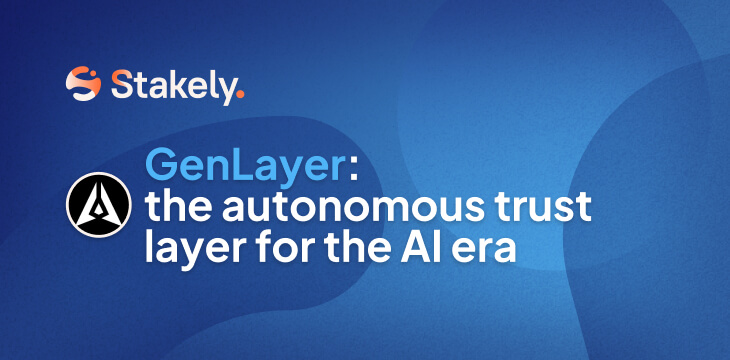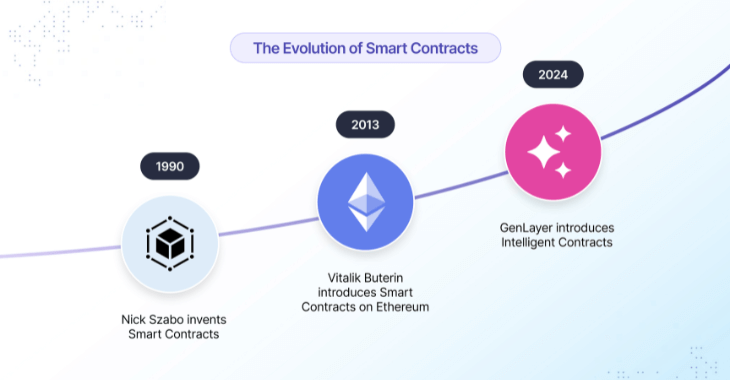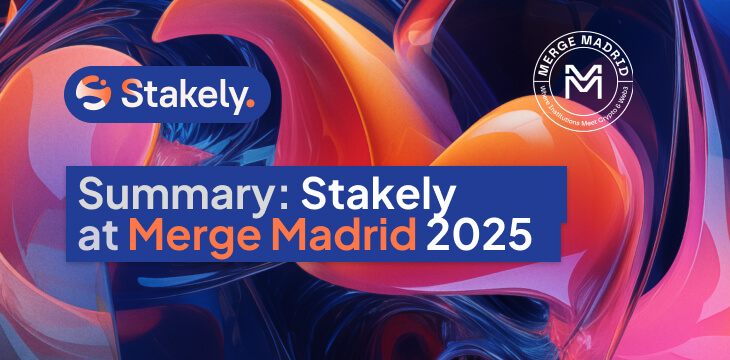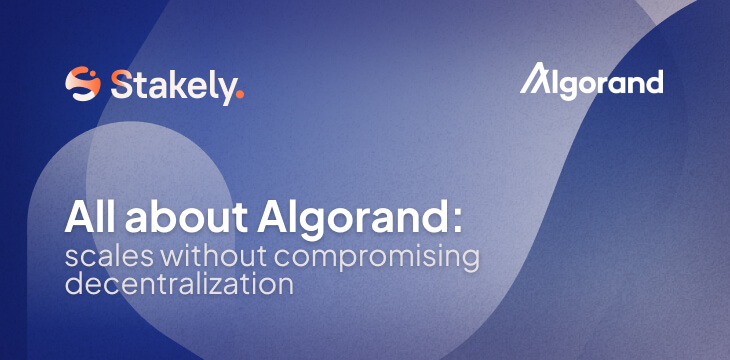GenLayer: when smart contracts learn to think

For years, smart contracts have been the backbone of automation in Web3—programs capable of executing agreements without intermediaries, in a transparent and verifiable way. However, they remained rigid systems: they could compute, but not interpret. When faced with ambiguity—such as a clause open to interpretation, a real-world event, or a linguistic nuance—their logic would halt.
GenLayer was born precisely to overcome that limitation. It introduces a new decentralized trust layer powered by artificial intelligence, enabling contracts not only to execute code but also to reason, understand, and respond to complex information.
In the words of its own team, it’s an AI-native trust layer: an infrastructure designed from the ground up to merge blockchain and AI.
What is GenLayer? A new way to program trust
GenLayer has an ambitious goal: to create an environment where smart contracts can process natural language, analyze contextual evidence, and make decisions that the network itself can verify.
Instead of being limited to the typical deterministic conditions (“if A, then B”), it introduces Intelligent Contracts—a direct evolution of traditional smart contracts. These contracts can read real-time web data, interpret texts or images, and execute actions based on qualitative criteria.


The result is a blockchain capable of operating with programmable ambiguity—something previously unthinkable.
This unlocks entirely new possibilities:
- DAOs that understand proposals written in human language
- Markets that react to global events without relying on centralized oracles
- Contracts that can judge whether an action violates an agreement—without human intervention
To make it possible, GenLayer combines three technological pillars: a custom execution environment (GenVM), a new consensus model (Optimistic Democracy), and a ZK-rollup infrastructure anchored to Ethereum.
GenVM: The environment where contracts think
At the technical core of GenLayer is GenVM, its AI-native virtual machine.
Unlike the EVM (Ethereum Virtual Machine), GenVM is designed to handle unstructured data—such as text, images, or documents—and directly integrate language models (LLMs).
Contracts are written in Python, making it more accessible to AI developers familiar with that ecosystem. Each contract can call an AI model, process its output, and combine it with traditional business logic.
Imagine, for instance, a contract that receives an email and determines whether an NDA was breached—or one that analyzes economic headlines and adjusts DeFi loan rates based on context.
This combination of contextual reasoning and deterministic execution is what makes GenLayer a platform for smart contracts with judgment.
Optimistic Democracy: Consensus with cognitive diversity
One of the biggest challenges in introducing AI to the blockchain is achieving consensus. Model inferences aren’t always deterministic, and two validators might produce different results from the same input. To solve this, GenLayer developed its own consensus mechanism: Optimistic Democracy.
Here’s how the process works: a leader validator proposes a result after running their AI model; the other validators independently perform the same inference and vote on the proposed outcome. If there is consensus, the transaction is finalized. If there is disagreement, leadership rotates among the validators while keeping the same set. Each new leader submits a proposal again, and the rest vote. If, after completing a full rotation cycle, no majority is reached, the transaction is marked as “Undetermined.” At that point, any participant may choose to appeal the decision. When an appeal is initiated, a review phase begins in which additional validators are added until a broader majority is reached. If the appeal succeeds, a new resolution is proposed and the process continues from there.
The practical result is a more robust consensus in the face of subjectivity, capable of validating complex reasoning with high confidence. And all this with finality times under an hour and transaction costs of less than a dollar.
Infrastructure and deployment on Ethereum
GenLayer is built as a ZK-rollup on Ethereum, integrated into the zkSync ecosystem. This allows it to inherit Ethereum’s security at a lower cost and with greater scalability.
The team has launched the Asimov testnet, an incentivized network for validators and developers, along with monitoring tools, telemetry, and detailed configuration guides.
For technical teams, GenLayer’s documentation includes SDKs, APIs, deployment and validation guides, as well as support for real-time metrics and diagnostics.
Use cases: Where blockchain meets AI
At this point, you may be wondering about real-world use cases. GenLayer enables scenarios where blockchain and artificial intelligence are natively integrated:
- On-chain dispute resolution: contracts capable of evaluating written evidence, comparing arguments, and issuing rulings automatically. Ideal for legal agreements, arbitration, or DAO policy enforcement.
- Context-aware DAOs: proposals written in natural language that the network can directly interpret—without templates or rigid parameters.
- Parametric insurance: automatic payouts based on events verifiable by AI—like weather conditions or IoT data—eliminating manual claims processes.
- Prediction markets with intelligent oracles: contracts that access real-time web sources and update their state based on external information, such as prices, news, or sports results.
- Autonomous agents: economies where AI agents transact, negotiate, or cooperate with each other in a verifiable way, backed by contractual logic that understands context.
For developers, GenLayer represents a new paradigm: contracts that don’t just execute code—they can interpret, reason, and react to changing information.
Intelligent Oracles: native oracles capable of interpreting real-world information
Alongside its execution environment (GenVM) and its consensus model, GenLayer introduces Intelligent Oracles, one of its most distinctive components.
Unlike traditional oracles, typically limited to publishing numerical data or external feeds, Intelligent Oracles are designed to process complex information such as text, context, real-time web sources, or any data that requires AI-driven interpretation.
They enable Intelligent Contracts to work with real-world signals in a verifiable way, unlocking scenarios such as:
- prediction markets powered by contextual analysis,
- settlements based on events interpreted by AI,
- contracts that react to news, documents, or external outcomes,
- autonomous agents making decisions with on-chain-validated qualitative inputs.
They are a critical part of the GenLayer ecosystem because they extend the deterministic logic of blockchain with a native interpretation layer, without relying on external centralized oracles.
GEN token and the economics of consensus
The protocol’s native token is GEN, which powers the network’s economy. Its main functions include:
- Paying transaction fees
- Participating in validator staking
- Being used in appeal mechanisms within the consensus process
In conclusion, GenLayer goes beyond contracts
At its core, GenLayer is the most solid attempt yet to merge cryptographic precision with artificial intelligence reasoning. An infrastructure that doesn’t aim to replace blockchain logic, but to extend it—so it can interpret the world on its own terms.
For the Web3 community, it’s a chance to explore a new technological frontier.
For developers and validators, it’s a space where trust is no longer binary—but contextual.
Would you like to explore GenLayer?
- Official website: genlayer.com
- Technical docs: docs.genlayer.com
- GenLayer Studio: studio.genlayer.com
- GitHub: github.com/genlayer





